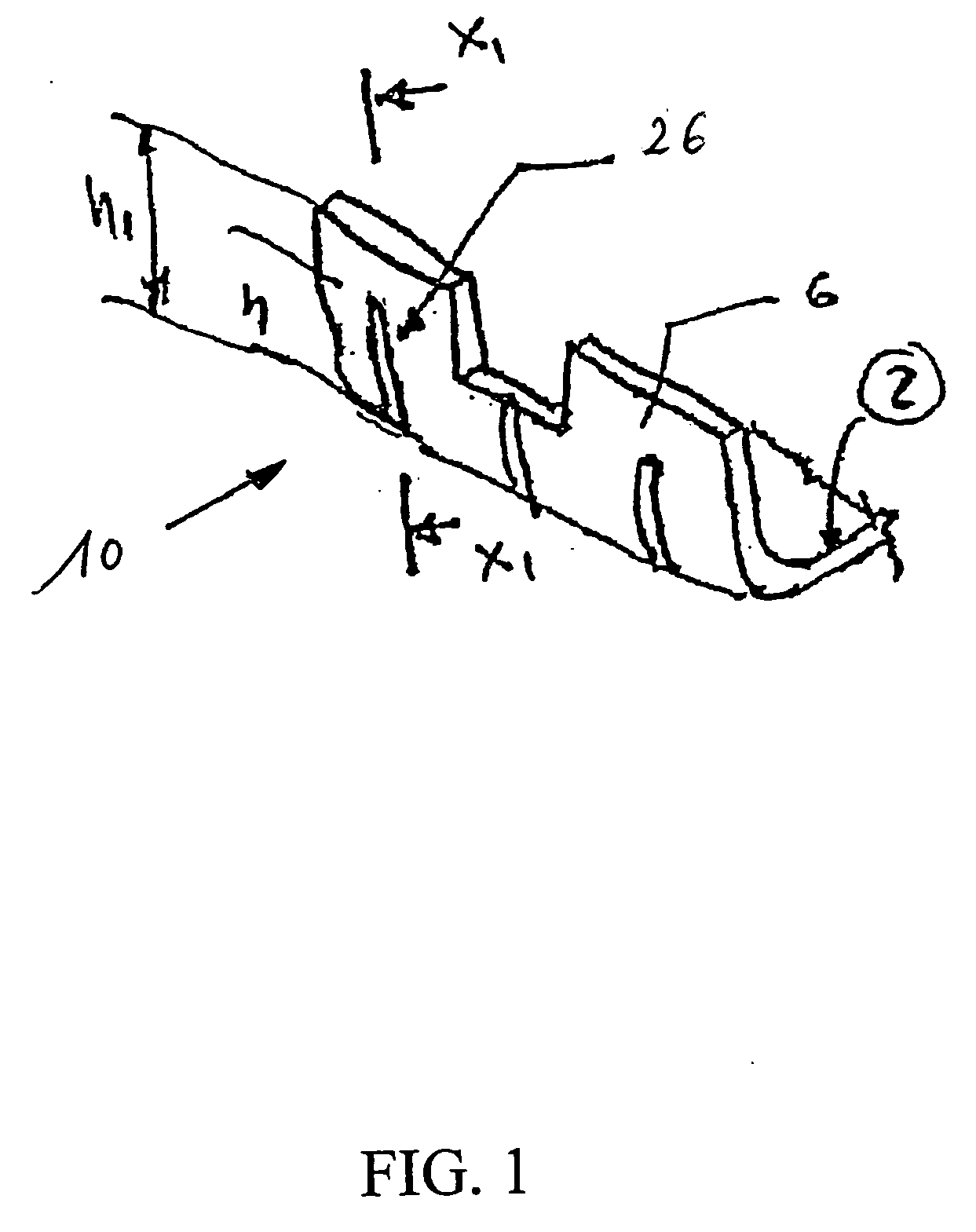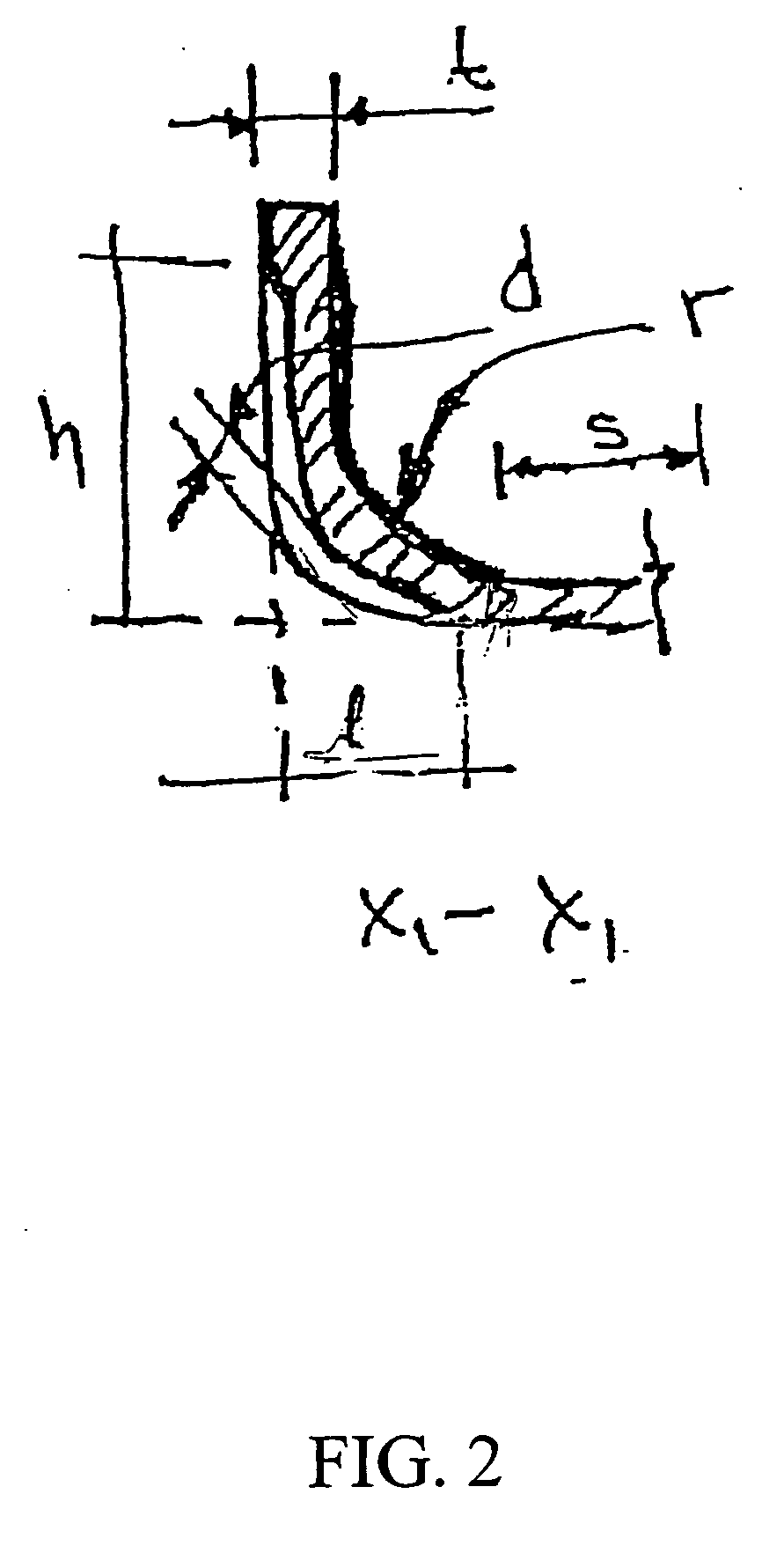Heat exchanger header with deformations
a heat exchanger and header technology, applied in the direction of heat exchanger fastening, heat exchange apparatus, stationary conduit assembly, etc., can solve the problems of significant negative impact and loss of heat exchanger strength during cold (non-thermally-heated) work, and achieve increased heat exchanger durability, increased pressure resistance, and increased material strength
- Summary
- Abstract
- Description
- Claims
- Application Information
AI Technical Summary
Benefits of technology
Problems solved by technology
Method used
Image
Examples
Embodiment Construction
[0032] Referring to FIGS. 1-7, deformations (26) are added, preferably by a jig, to the side wall tab (hook) of the header (10). Interior surface of header (2) is shown.
[0033] As shown in FIG. 2 for the deformations made on the outer side of the wall Depth of the deformation (d), height (h) length (l) and width (w) (see also (w3) of FIG. 10) are measured to confirm adequate function.
[0034] In a preferred embodiment of the present invention, the (h) dimension can be from about 10% to the full size of the tooth (h1). The width (w) can be from 0.1 mm to the end of the curve of the inside radio (r) with the intersection of the sealing surface (s). The depth (d) dimension can be from about 0.1 mm to max of 50% of the material thickness of the header core. Width (w3) can be from 0.2 mm to 3.0 mm, or otherwise, depending on the actual configuration of the heat exchanger.
[0035] Referring to FIGS. 3-7 are additional preferred embodiments of the present invention. The tab (6) is bent into ...
PUM
| Property | Measurement | Unit |
|---|---|---|
| width | aaaaa | aaaaa |
| thickness | aaaaa | aaaaa |
| area | aaaaa | aaaaa |
Abstract
Description
Claims
Application Information
 Login to View More
Login to View More - R&D
- Intellectual Property
- Life Sciences
- Materials
- Tech Scout
- Unparalleled Data Quality
- Higher Quality Content
- 60% Fewer Hallucinations
Browse by: Latest US Patents, China's latest patents, Technical Efficacy Thesaurus, Application Domain, Technology Topic, Popular Technical Reports.
© 2025 PatSnap. All rights reserved.Legal|Privacy policy|Modern Slavery Act Transparency Statement|Sitemap|About US| Contact US: help@patsnap.com



